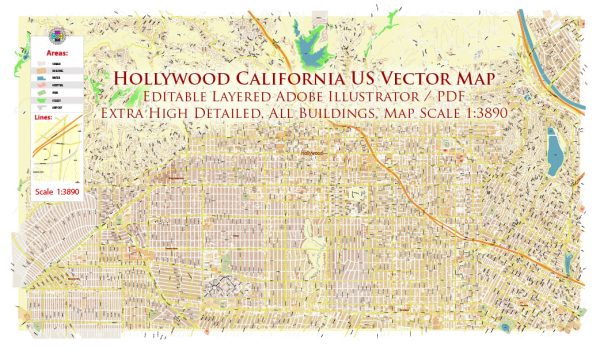Hollywood, California, is one of the most famous and iconic neighborhoods in the United States, primarily known for its association with the American entertainment industry. Its history is rich and closely intertwined with the development of the film, television, and music industries. Here’s a brief overview of Hollywood’s historical significance:
- Early Settlement: Hollywood was originally settled by European Americans in the late 19th century. It was a small independent community and an agricultural area with orange groves and farms.
- Birth of the Film Industry: Hollywood’s transformation into the epicenter of the film industry began in the early 20th century. In 1911, a group of film producers, including D.W. Griffith and Mack Sennett, moved to the area to escape the restrictions of Thomas Edison’s Motion Picture Patents Company, located on the East Coast. Hollywood’s mild climate, diverse landscapes, and proximity to Mexico made it an ideal location for film production.
- Famous Studios: Some of the most iconic film studios in the world, including Paramount Pictures, Warner Bros., Universal Pictures, and 20th Century Fox, were established in Hollywood during the early 20th century. These studios played a crucial role in shaping the American film industry and producing countless classic movies.
- The Hollywood Sign: Originally constructed in 1923 as a real estate advertisement for the “Hollywoodland” development, the Hollywood Sign has become a globally recognized symbol of the neighborhood and the entertainment industry as a whole.
- The Golden Age of Hollywood: Hollywood’s “Golden Age” occurred during the 1930s and 1940s when it produced some of the most legendary and beloved films and stars in cinematic history. Actors like Marilyn Monroe, Humphrey Bogart, and Audrey Hepburn, and filmmakers like Alfred Hitchcock, Frank Capra, and Orson Welles, were among those who achieved fame during this era.
- The Entertainment Capital: Hollywood evolved into the entertainment capital of the world. Not only did it dominate the film industry, but it also became a hub for the music industry, with the famous Capitol Records building and the Hollywood Bowl as prominent landmarks. Additionally, the neighborhood is known for the Walk of Fame, featuring over 2,600 brass stars embedded in the sidewalks to honor celebrities from various entertainment fields.
- Cultural Movements: Hollywood has also been a focal point for cultural movements and trends, including the counterculture movements of the 1960s and the rise of independent cinema in the 1990s. It has also played a role in shaping the development of television and digital entertainment.
- Diversity and Challenges: Hollywood has faced criticism for a lack of diversity and issues related to representation in the entertainment industry. In recent years, there have been efforts to address these concerns and promote inclusivity.
- Modern Hollywood: Today, Hollywood remains a global symbol of the entertainment industry. It is home to many celebrities, world-renowned film festivals, and various entertainment-related businesses. Tourists flock to the area to experience its history and glamour, as well as to catch a glimpse of their favorite stars.
Hollywood’s history is a testament to the ever-evolving nature of the entertainment industry and its ability to shape not only the cultural landscape of the United States but also the world.


 Author: Kirill Shrayber, Ph.D.
Author: Kirill Shrayber, Ph.D.